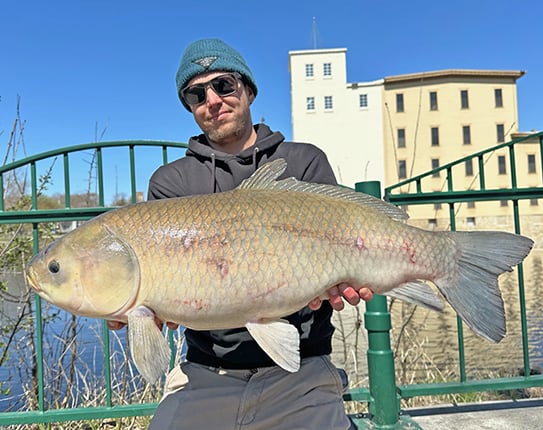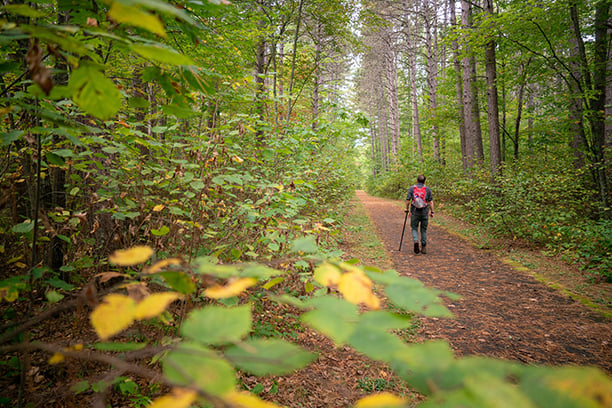Predator hunting: Here’s the latest in suppressors and night vision technology – Outdoor News
Predator populations are growing across much of the U.S. A farmer friend who raises pastured poultry in central Wisconsin was forced to confine his flock to the yard this summer due to an increase in predation by foxes.
Gray wolves have increased in the Upper Great Lakes Region, moving from more remote regions into agricultural areas with high concentrations of livestock. Yet they remain on the federal Endangered Species List. Raccoon, bobcat and coyote numbers also have ticked up in many places.
Despite the uninformed attitudes of some, predators need to be managed the same as other wildlife. As stewards of the natural environment, it is our responsibility as hunters to help control this dynamic.
Night hunting
Many of the predators, not on the ESL, have special hunting and trapping seasons. Coyotes, which are the most numerous and widespread, may be hunted all year long in many states, and during all hours of the day and night.
RELATED CONTENT FROM OUTDOOR NEWS:
Trapping: Fall fur prices appear ‘stable to better’
Reports show bears, bobcats, coyotes having brushes with people in the northeast this summer
Coyotes are becoming a bit too bold around the farm
Where it’s legal, hunting coyotes at night offers a number of advantages. Permission is often easier to secure since you aren’t directly competing with other hunters who might be on the property during the day. Predators are often more active and willing to come to a call at night.
Relying solely on moonlight, however, can put hunters at a disadvantage because coyotes can see better at night than humans. Predator hunters who’ve often had their quarry slip away in the dark, may seek the benefits of night vision or thermal optics.
Night vision optics
Night vision technology works by amplifying infrared light and converting it into an electrical signal that can be processed by the human eye. This signal is then used to create a monochrome image through your scope or optic that allows you to better see in darkness.
Often times just small amounts of light from the moon or stars is all that is needed to convert a low-lit scene into a brighter image. The converted image is often displayed in a green shade, enabling more objects to be seen in a lowly-lit area. Although it’s more difficult to detect animals at longer range with night vision optics, they are generally less expensive than thermal equipment.
Thermal technology
On the other hand, thermal technology uses infrared radiation to detect heat within objects, and requires no external light. It detects the infrared heat emitted by animals even hidden in foliage, and converts it into a visible image.
Thermal imaging relies on colors to relay the amount of heat an object is emitting to the hunter. Warmer colors are often relayed in shades of red, orange, and yellow. Cooler heat signatures are usually shown in shades of blue, purple, and green. Thermal optics are generally more expensive than night vision equipment.
Optic specifics
Several companies produce night vision and thermal optics. Prices range from around $700 for night vision optics to several thousand dollars for full-featured thermal scopes.

Popular models include:
• ATN’s X-Sight-4k, 3-14X, Pro Edition Smart Day/Night Hunting Rifle Scope in Mossy Oak Bottomland provides sharpness and definition of view regardless of zoom level thanks to an Ultra HD 4K Sensor and Obsidian VI Dual Core. Other features include a built-in ballistic calculator, recoil activated recording and 18-hour battery life.
• The ATN Thor-4 384 1.25-5×19 Smart Thermal Riflescope features ATN radar, video recording and one-shot zero to accurately and quickly get on target. There’s also a smart mil-dot reticle and auxiliary ballistic laser. atncorp.com

• The Armasight Contractor 320 6-24×50 Thermal Rifle Scope is built around a proprietary ArmaCORE 12 Micron Sensor, and combines image processing, wireless communication interface, GPS, and internal memory in a single housing that yields a 40% reduction in size and 25% reduction in weight. There’s also an intuitive turret system to help navigate features, such as digital zoom, color pallet and reticles. The units are equipped with a digital compass and inclinometer that help calculate distance, direction and angles. armasight.com

• Pulsar’s all new Thermion 2 LRF XL50 features a powerful 1024×768 @ 12 µm thermal sensor, 1.75-14x magnification and a 2,500-yard detection range which offers sharp detail at virtually any distance. The two technologies – 4k color and thermal imaging – can be used independently or simultaneously using picture-in-picture (PiP) feature that takes up just 10% of the display’s field of view. pulsarnv.com
Suppressing the sound
Most predators also have superior hearing. A single rifle shot may cause all coyotes to quickly vacate the area.
While suppressors offer several advantages for those who hunt a variety of game, they are especially advantageous for predator hunters who might have two or more coyotes to come to call. If a suppressed shot is fired, that second or third ’yote might find it difficult to pinpoint the source of the danger, making successive shots easier.

Although a suppressor lowers the sound of a shot to hearing-safe levels, reducing it by around 23 to 36 decibels, it is not totally quiet. When a bullet exits the muzzle, it’s traveling faster than the speed of sound, so it makes a sonic crack. It sounds about like a mild .22 rimfire cartridge being fired. That sonic crack accompanies the bullet downrange to and past your game; from where they’re standing it seems to come from all around.
Popular addition

Suppressors are among today’s hottest rifle accessories. In almost every hunting article or video you’re likely to see at least one hunter with an extra half-foot of metal at the muzzle of his rifle. Because many rifles now come standard with threaded muzzles, installing one is usually easy.
As this is written, suppressors are legal for civilians to own in 42 states, and it’s legal to hunt with one in 40 of those states. They’re currently banned in California and Illinois, and other states in the Northeast. The trend has been toward allowing them, not banning.
Many rifles will deliver increased accuracy when a suppressor is attached. The weight on the end of the barrel tends to reduce vibration and barrel oscillation, so groups shrink. Shooter accuracy benefits, too, thanks to reduced recoil and muzzle blast. Depending on the specific suppressor and the cartridge for which a rifle is chambered, recoil can be reduced by 25 to 50 percent.
Suppressors are rated by cartridge, so buying a suppressor that is rated for the firearms you intend to suppress is essential. Several well known firearm companies offer suppressors, including Nosler and Sig Sauer. Others are Sure Fire, Dead Air Sandman, Omega and Banish, which is sold by Silencer Central.
Some disadvantages
You’ll pay a price for the advantages that come with a suppressor. The first price comes in the form of cash. Suppressors rated for centerfire cartridges range from around $600 up to $1,700. That doesn’t include the $200 tax stamp and the mountain of red tape that came along with the National Firearms Act of 1934.
Several companies will help you navigate the process of buying a suppressor, but Silencer Central creates a free suppressor trust if you purchase through them, so your spouse and children can also possess the suppressor. They’ll provide the forms and submit your paperwork, and when your application is approved, they ship your suppressor directly to your home, which could take another six months.
Suppressors also add 12 to 16 ounces and several inches to a rifle barrel, which makes it more likely to snag on brush, and makes a gun more awkward to carry in the field.
Be sure to check with your state wildlife agency regarding hunting hours and other regulations before heading afield.
Regardless of what equipment you use, it important to remember that predator hunting, done responsibly, can benefit deer and other game species, helping keep the environment in balance. On top of that, it’s also an opportunity to have fun and learn to be a better hunter.





